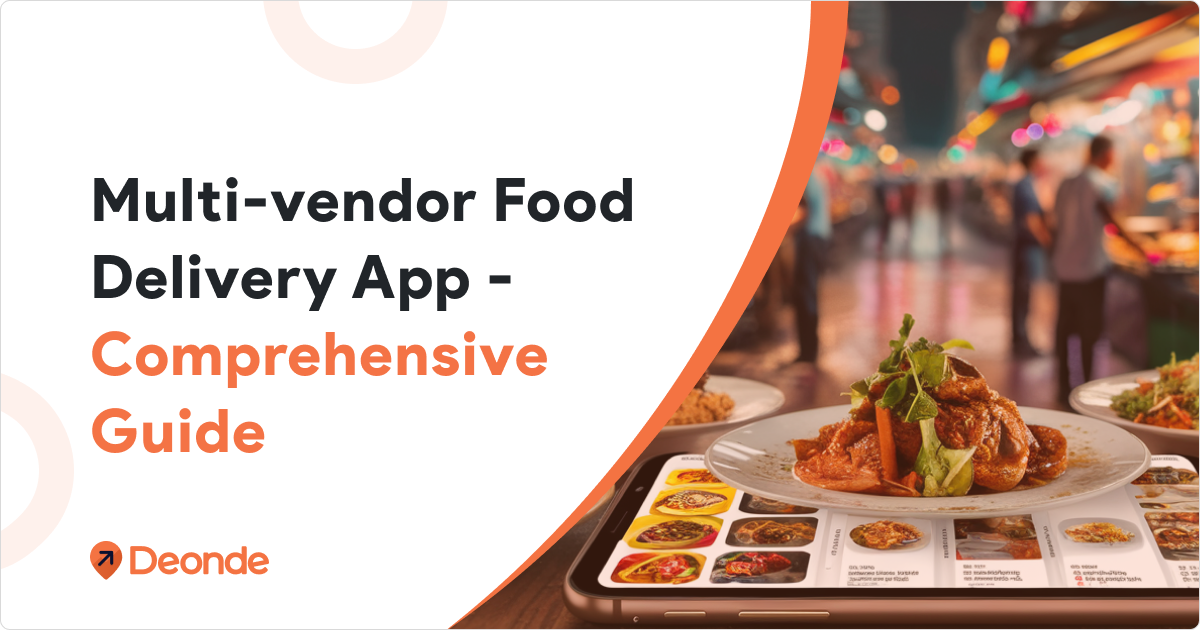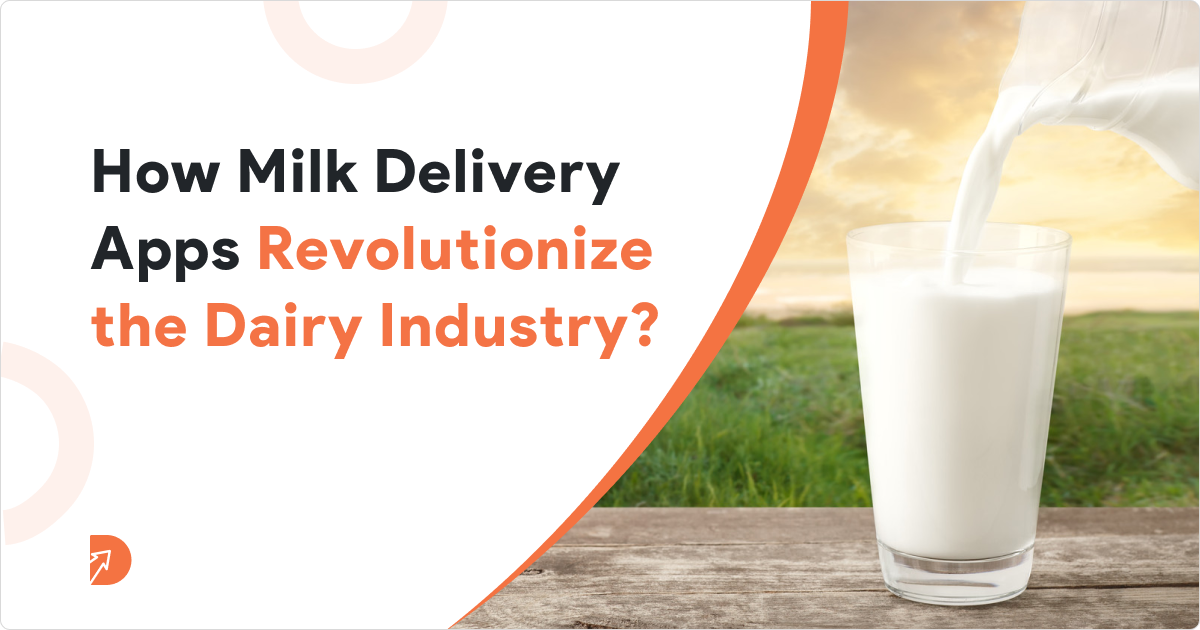The online meal delivery industry has dramatically transformed in recent years, becoming an essential component of modern lifestyles. Thanks to technological advancements and the proliferation of mobile applications, people can now order their favorite meals with a few clicks on their cell phones. As a result, there is a thriving market with numerous competitors vying for a piece of the pie.
This blog will look into the most recent online food delivery statistics, examining important trends, growth figures, consumer preferences, and the industry’s response to the COVID-19 pandemic. Let’s delve into the fascinating ideas and numbers impacting the future of the online meal delivery sector.
As per Statista, the number of users in the Meal Delivery segment is estimated to reach 2.45 billion by 2027. Want to build your own food delivery app? we can help!
Online Food Delivery Statistics
The market for online meal delivery services is rapidly expanding, with a projected CAGR of 9.8% from 2022 to 2032. The market was valued at US$ 38,200 million in 2022 and is predicted to grow to an amazing US$ 97,291.58 million by 2032.
This exponential expansion can be linked to customers’ increasing exposure to Internet services, which has resulted in the widespread usage of meal delivery apps and an increase in demand for doorstep food delivery services. The success of food delivery aggregators like Swiggy and Zomato in India demonstrates the industry’s enormous potential. Sociological developments such as the rise of dual-income households and changing client live stimulate demand for online food delivery services even more. Significant investments in food transportation and changing customer tastes also aid market expansion. Fresh food, quick home delivery, and ease of access fuel the growth of online food delivery services, particularly among millennials.
While the sector is still in its early stages, the availability of numerous meal delivery platforms and shifting pricing techniques are projected to increase competition. However, the industry confronts obstacles such as restaurant restrictions on multiple deliveries and inefficiencies in managing high order volumes.
To address these problems, the advent of virtual restaurants and delivery-only kitchens presents the industry with attractive growth opportunities during the forecast period.
According to Future Industry Insights, the value of the online meal delivery services industry increased by 7.6% between 2017 and 2021.
The rise in smartphone usage has been a major driver of the global expansion of online food delivery businesses. Smartphone users are key consumers in the F&B industry, resulting in a surge in food and beverage internet searches.
North America will likely lead the market on a regional basis, owing to the United States inclination for meal delivery services.
ALSO READ: How to Start a Meal Prep Business?
Key Food Delivery Statistics
• China is the largest market for meal delivery, with a $42.5 billion market in 2022. Meituan and Ele. I control over 90% of all food delivery in the country.
• The food delivery app sector will be worth $165 billion by 2029.
• While Uber Eats is the most popular food delivery service, Delivery Hero has the most users in total.
• In the United States, DoorDash is the most popular meal delivery app, accounting for more than half of the industry.
• Revenue in the Online meal Delivery market is expected to reach US$1.02 trillion by 2023.
• Revenue is estimated to expand at a 12.67% annual pace (CAGR 2023-2027), resulting in a market volume of US$1.65 trillion by 2027.
• Grocery Delivery is the market’s largest category, with a forecast market volume of US$0.63 trillion in 2023.
• In terms of worldwide revenue, China will generate the most ($395,900.00m in 2023).
• In 2023, the average revenue per user (ARPU) in the Grocery Delivery segment is expected to be US$449.00.
• In 2023, user penetration in the Meal Delivery segment will be 25.2%.
In 2024, the Grocery Delivery category is predicted to rise by 22.2% in revenue. Develop your on-demand grocery delivery app to increase your revenue.
Online Food Delivery Industry Analysis
In recent years, the internet meal delivery industry has experienced substantial development and transformation owing to various causes, such as technical advancements, changing customer preferences, and the impact of the COVID-19 epidemic. Here is a detailed examination of the essential features of the online meal delivery industry:
- Market Size and Expansion: The global online meal delivery market has grown astronomically. Thanks to the rising use of smartphones and internet connectivity, consumers now have simple access to various meal delivery platforms and apps. Market predictions indicate that the industry will expand quickly over the coming years.
- COVID-19 Influence: The COVID-19 pandemic has significantly influenced the online food delivery business. People turned to food delivery services for their dining needs due to lockdowns and social distancing measures in place. During the epidemic, this surge in demand resulted in higher income and order volumes for online meal delivery companies.
- Competitive Environment: The sector is extremely competitive, with numerous firms striving for market share. Leading companies such as Zomato, Swiggy, Uber Eats, DoorDash, and Grubhub have established themselves as regional leaders. Companies that offer discounts, loyalty programs, and smooth consumer experiences gain a competitive advantage.
- Business Models: Third-party aggregators, restaurant-owned platforms, and cloud kitchens are all examples of business models used in the online meal delivery market. Third-party aggregators operate as go-betweens for customers and restaurants, while restaurant-owned platforms allow direct orders from their facilities. Cloud kitchens have also become popular, allowing virtual eateries to cater solely to delivery orders.
- Convenience and Customer Experience: Convenience is a big development factor for online food delivery services. Customers love the ease of ordering food from the comfort of their homes or offices, eliminating the need to visit restaurants in person. Customer satisfaction necessitates reliable and timely delivery services.
- Issues: The industry confronts several issues, including preserving profitability in fierce competition, ensuring food quality during delivery, resolving regulatory compliance, and efficiently managing delivery logistics.
- Future Trends: With the introduction of innovative technology, such as drone deliveries and driverless vehicles, the sector is projected to continue evolving. Furthermore, the emphasis on sustainability and eco-friendly practices is projected to grow.

Which Company is Dominating the Restaurant Food Delivery War?
Meal delivery sales in the United States reached astronomical levels during the early days of the coronavirus outbreak. Major meal delivery businesses recorded a spectacular 162% year-over-year rise in April 2020 and a 59 percent gain over the previous month.
Despite hurdles such as rising food prices, competition from dine-in restaurants, and higher fuel expenses, the meal delivery industry has continued to develop, albeit slower than during the peak pandemic. In June 2023, sales for major meal delivery services increased by 6% yearly.
Among the major contenders, DoorDash and its subsidiary Caviar emerged as obvious winners, accounting for 65 percent of meal delivery sales in the United States in June 2023.
Between January 2019 and June 2023, DoorDash’s market share among these companies roughly doubled. Uber Eats came in second with 23% of the sales, while Postmates, which Uber purchased in November 2020, accounted for 2%, increasing Uber’s overall market share to 25%.
Grubhub and its subsidiaries, which include Seamless, Eat24, and Tapingo, accounted for 10% of meal delivery customer expenditure in June 2023. During the same period, the smaller service, ASAP (formerly known as Waitr) and its subsidiaries Bite Squad, Arrowhead Delivery, and Delivery Dudes, earned less than 1% of national sales.
It should be noted that the data indicates gross merchandise volume rather than corporate revenue. Furthermore, some service data was not trackable at some times. While the industry expands, these key firms are actively vying to keep their positions and gain a larger portion of the extremely competitive restaurant food delivery market.
Online Food Delivery Industry Overview
The internet meal delivery industry has undergone a remarkable metamorphosis in recent years, with rapid expansion and shifting consumer behaviors. The market has been propelled by several factors leading to the rising e-commerce scene globally, with a predicted Compound Annual Growth Rate (CAGR) of 16.24% throughout the forecast period.
The increasing number of online food delivery businesses is one of the key factors in this industry’s growth. Consumers with a greater awareness of e-commerce trends enjoy the ease of buying food online, supported by secure and simple payment choices. Furthermore, rising discretionary income and a shift towards working from home have pushed more consumers to choose online food delivery, reducing time spent on cooking.
Increased internet penetration, extensive smartphone use, simpler e-banking systems, effective food-service logistics, and changing lifestyles have all contributed to the rapid expansion of online food delivery services. The Indian market, for example, is expanding rapidly, with forecasts predicting 80 million monthly active users on food delivery platforms in 2021, rising to 200 million in the future years.
Recent industry trends include real-time order tracking and customized food delivery, prompting corporations to invest extensively in R&D and increase their geographical reach. Leading players such as Delivery Hero SE, Grab Holdings Inc., Deliveroo, and Uber Technologies Inc. use logistics-focused food delivery systems to scale efficiently with lower costs and faster delivery.
Companies use expansion, mergers, acquisitions, and partnerships to consolidate their market position and optimize their offers as the market becomes more competitive. Swiggy, for example, collaborated with Garuda Aerospace to launch drone-based grocery delivery in Bengaluru and the Delhi-NCR region, demonstrating novel techniques to improve their services.
The Online Food Delivery sector continues to grow and innovate, fueled by consumer desire for convenience and the constant evolution of technology. Advances in research, technology, and service quality are anticipated to determine the future of this dynamic business as major players battle to strengthen their market dominance.
Most Used Food Delivery Applications
Here are some of the globally recognized and widely used food delivery apps included:
- Uber Technologies Inc.
- DoorDash, Inc.
- Delivery Hero SE
- Meituan Inc.
- Just Eat Takeaway N.V.
- Domino’s Pizza, Inc.
- Roofoods Ltd.
- Demae-Can Co., Ltd.
- Bundl Technologies Private Limited
- Zomato Limited
- Yandex.Yandex
- Rappi Inc.
Impact of online food delivery on Customers
The rise of online food delivery has had a significant impact on customers in various ways:
- Convenience: Customers may now order their favorite meals from the comfort of their homes or offices thanks to online food delivery. This convenience saves time and effort, especially for people with hectic schedules.
- A Wide Choice of Restaurants and Cuisines: Customers now have access to diverse restaurants and cuisines, including local and international options. This variety allows clients to try various flavors and eating experiences they might not have explored otherwise.
- Seamless Ordering: User-friendly interfaces on online meal delivery platforms make ordering simple and quick. Customers can easily customize their orders, add discounts, and track real-time deliveries.
- Time-Saving: By eliminating the need for customers to physically visit a restaurant, online meal delivery saves customers time, which they may use for other activities or relaxation.
- Special Offers and Discounts: Many online meal delivery platforms offer clients unique deals, discounts, and loyalty programs, making dining out cheaper.
- Reviews and Ratings: Customers may access reviews and ratings of restaurants and items, allowing them to make more educated judgments about their orders and have a better overall experience.
- Contactless Payments: Online food delivery promotes contactless payment systems, which are becoming increasingly vital in ensuring cleanliness and safety, particularly during the COVID-19 pandemic.
- Increased Competition: As online food delivery has grown in popularity, so has competition among restaurants and delivery providers. This competition frequently results in higher service quality, faster deliveries, and more appealing client offerings.
- Impulse Buying: Because clients are exposed to various appealing options when perusing menus, online meal delivery platforms might lead to impulse purchases.
- Environmental Concerns: Increased food delivery orders may result in increased packaging waste and carbon emissions, which may worry ecologically conscientious clients.
Conclusion
As the internet meal delivery sector continues to flourish, the figures presented in this blog shed light on its enormous growth and disruptive impact on how we eat. The data tell a compelling story of how technology has revolutionized the culinary environment, from the exponential rise in digital orders to altering consumer tastes. The COVID-19 pandemic functioned as a catalyst, propelling the sector to new heights as consumers embraced the convenience and security of online meal delivery services. The future of online meal delivery promises to be an exciting voyage of developing trends and ever-increasing numbers, with novel technologies and sustainable practices on the horizon. These numbers will continue to shape how we savor our favorite meals as the industry adapts and grows, making online food delivery an integral part of our modern lives.
Frequently Asked Questions ( FAQ’s )
How Many Indians Order Food Online?
81% of Indians use delivery apps to buy food.
Which Age Group Orders Food Online the Most?
25-34 years old is the age group who orders food online the most.
Which Food Delivery App Has the Most Orders?
DoorDash as per United States and Zomato leads in India




